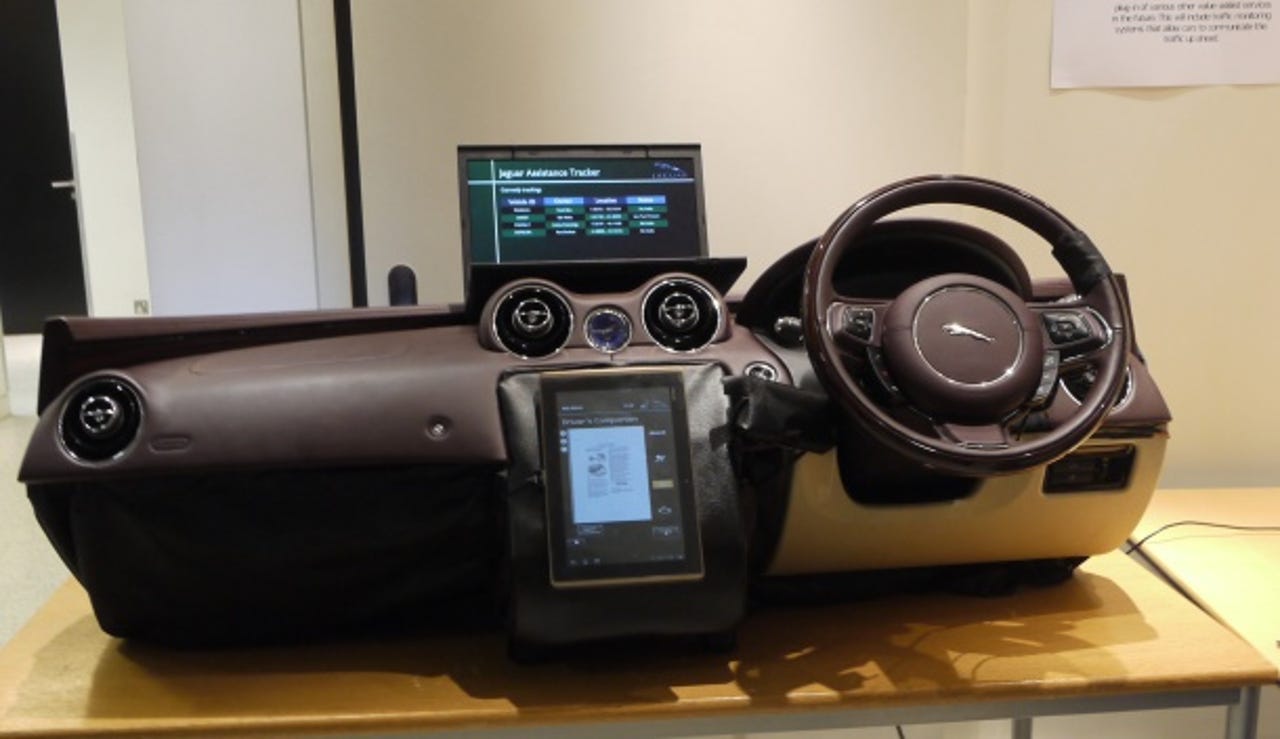IBM sets students loose in the lab


IBM Extreme Blue Smarter Vehicle
IBM has shown off technology developed by UK students under its Extreme Blue summer internship scheme, which gives participants 12 weeks to develop cutting-edge ideas and business plans for new products.
The programme has been running every summer since 1999. The 2011 intake — four teams of four students — came up with proof-of-concept products for smart cars, e-voting machines, accessibility devices and network analysis tools. The projects were demonstrated at IBM's London offices on 31 August.
The Smarter Vehicle platform (pictured) uses RFID technology to wirelessly identify the driver as they walk toward the car. Once they are identified, the car is loaded with data of their past driving behaviour.
The dashboard developed by the Extreme Blue interns has a touchscreen interface, used in tandem with sensors placed throughout the car. "It's a real Jaguar dashboard," said Stuart Wilkinson, IBM manager of the Extreme Blue UK scheme. "The sensors on the steering wheel sense how hard you are gripping the wheel."
Other sensors track tyre pressure, locks, radio settings, GPS-based location and brakes. "[The] sensors pick up information and display it on the screen with the output of what could happen," Wilkinson said.
IBM Extreme Blue Smart Cursor
Each group included three technical students and one business intern, so that they could come up with a business plan as well as a product.
One team worked on developing technologies for accessibility and came up with this Smart Cursor. The device uses a sensor (pictured) that can be calibrated and set according to user-defined movements. For instance, swiping the cursor left could move the cursor left, while rotating it could be made to indicate a click.
It is designed for individuals who, due to disability or preference, want to tweak the way they interact with their devices.
"The objective is to produce a system which may be calibrated and adapts to the particular daily limitations of the user," IBM said. "We envisage the product having applications across a spectrum of contexts — including RSI prevention, injury rehabilitation and tremor recognition."
IBM Extreme Blue electronic voting
Another team developed an electronic voting proof-of-concept device, which makes it possible to let people choose their polling station, and opens up the types of identification they can use.
The team came up with ways of linking local authority databases to external ones, such as those operated by the Driver and Vehicle Licensing Agency and the Department for Work and Pensions. Once an individual has registered to vote and provided identification information, the council could then use these external databases to verify the identity.
In the proof-of-concept (pictured), a device scans a person's polling card to verify their identity.
The technology means people could choose from multiple polling stations to cast their vote, not just the one in their local area. Also, as the voting system is electronic, IBM hopes it could cut the amount of paper waste and make it quicker to count votes.
IBM Extreme Blue FTP discovery
Another team built an application for visualising file-transfer protocol (FTP) networks within organisations, to give administrators a novel view of data.
By tracking packets as they move over the network and the points they pass through, the program is able to map the network and its interconnections, and guess at the relative importance of the network nodes.
"The team have created a sniffer which sits there and listens to what is going on in a network. You can set up whether you're listening to FTP traffic or HTTP traffic or other different types of protocols. It listens to that, stores the data and analyses it to display relationships on screen," Wilkinson said.
"The team allows the end user to see the paths and flow of data within an organisation. One flow of data might be invoicing. The end user can tag that flow as invoicing, and the team can then do node-centrality analysis, which means they re-image the nodes so that the most important ones are largest on screen," he added.
In the past, technologies developed by Extreme Blue interns have gone on to be turned into IBM products — some technologies have gone into IBM's information management pieces of software, Wilkinson said — or they have been made open source and donated to the community.
At the time of writing, Wilkinson was not able to say whether IBM expects any of the UK intake's four products to be open-sourced or turned into products.
Get the latest technology news and analysis, blogs and reviews delivered directly to your inbox with ZDNet UK's newsletters.